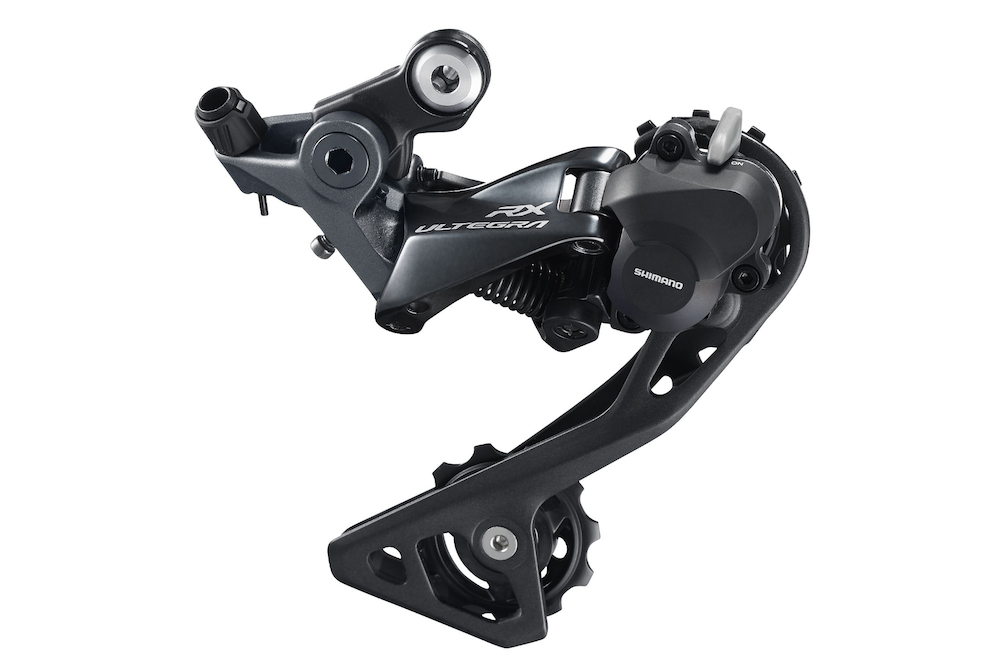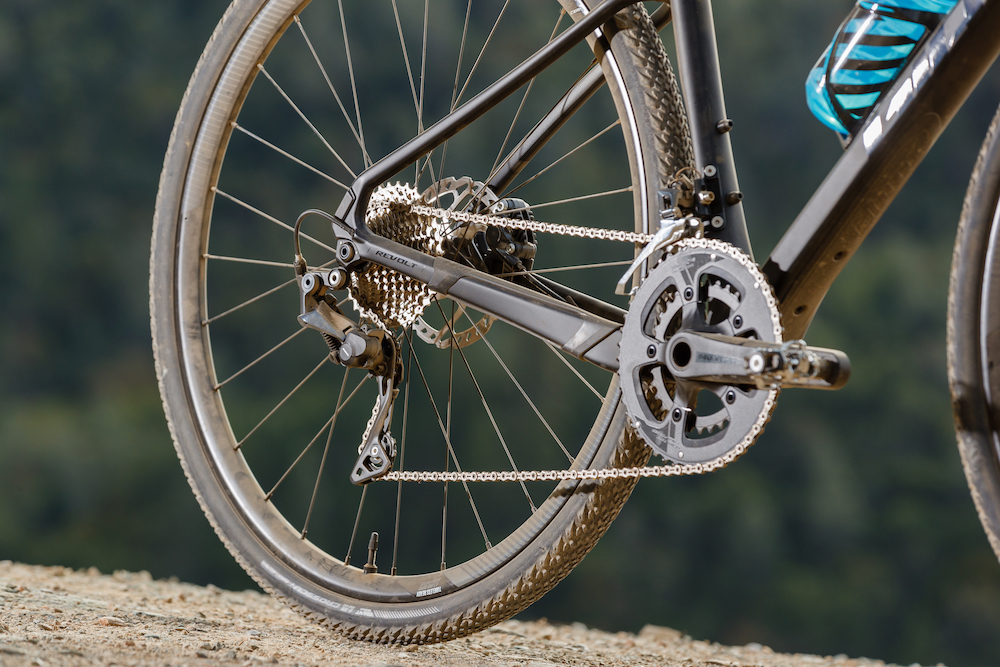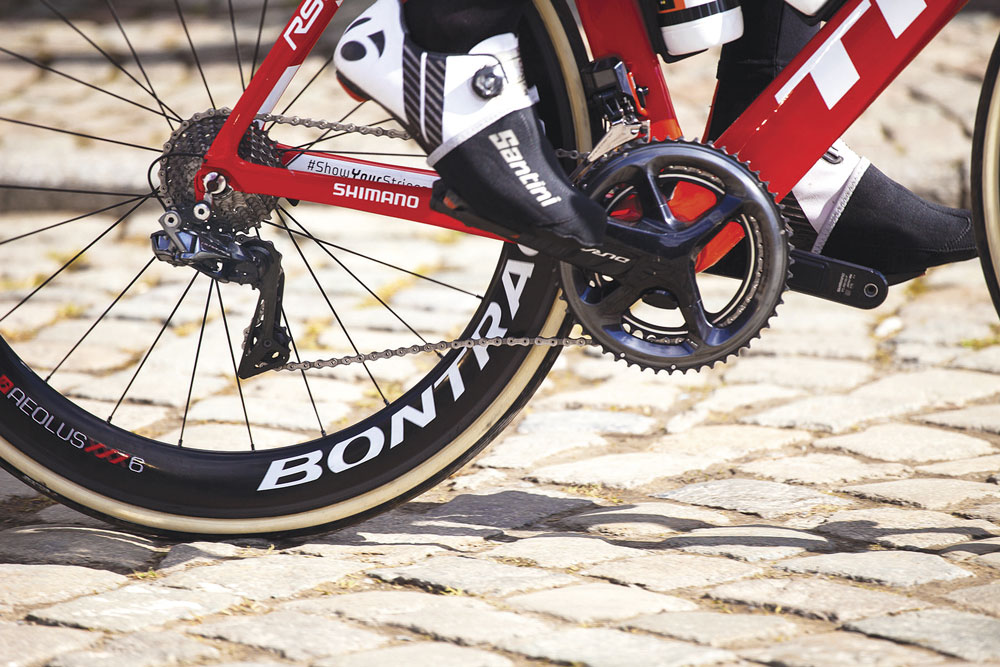Shimano Ultegra RX rear mech review
We find out why you might want a clutched rear derailleur

An excellent addition to any bike used to ride on uneven surfaces, the Shimano Ultegra RX rear mech reduces chain slap and tightens up shift quality.
-
+
Reduced chain clatter over uneven surfaces
-
+
Cleaner shifting
-
+
Clutch can be disengaged when riding on smoother surfaces
- +
-
-
Plastic clutch housing and lever
You can trust Cycling Weekly.

In April, Shimano launched its Ultegra RX rear derailleur in both mechanical and Di2 formats. The Ultegra RX mech differs from a standard Ultegra mech in having a clutch mechanism housed in the pivot for the jockey wheel cage. There’s a lever on the mech that lets you engage or disengage the clutch.
When engaged, the clutch makes tension-releasing movement of the cage stiffer than tension-adding movement, so helping to keep the chain from flapping up and down and slapping the chainstay when riding over surface obstacles.
This is good for a few reasons: first the more constant chain tension reduces chain clatter, second it leads to more consistent shifting, third it lessens the chance of dropping the chain, fourth it leads to better power transfer, and fifth it reduces scratches and bashes on the chainstay and bottom bracket shell of your expensive bike frame.
>>> Do you need a clutch rear derailleur?
On the negative side, there’s a small increase in friction in the drivetrain, which is why Shimano gives you the option to disengage the clutch.

SRAM’s 1x single ring groupsets also have a clutched mech for the same reasons and their alternating wide/narrow toothed chainrings with their deep teeth are designed to help promote chain retention.
>>> Shimano 105 R7000 groupset review
The latest race content, interviews, features, reviews and expert buying guides, direct to your inbox!
Shimano is sticking with two chainring configurations on road for the moment (although some bikes like the top end version of the Cannondale SuperX have single-ring Shimano set-ups).
Riding with the Ultegra RX rear mech
I swapped out a last-generation Ultegra 6800 mechanical rear derailleur on a Cannondale CAADX cyclo-cross bike for the clutched Shimano RX800 GS mech and headed into the woods.
The effect of the swap was obvious, with much cleaner shifting and a reduction in drivetrain noise. Some of this is down to the Shadow design of the latest generation of Shimano road mechs: the derailleur is positioned ahead of the cassette rather than directly below it, so the chain wraps around more teeth of the cassette, leading to more points of engagement.
Switch the clutch off and the drivetrain still runs more quietly and shifts better than with the older Ultegra 6800 mech. But there’s another increment in shift quality and reduction in chainslap with the clutch engaged. You still get some side to side movement of the chain, but up and down movement is reduced significantly.

I was somewhat concerned about the durability of the plastic lever and housing for the clutch. But Shimano has been making clutched off-road mechs with plastic housings and levers for a few years and our colleagues at MBR tell us that they’ve never come across damage to either.
With the Shadow design, the mech is less in the firing line than with the older positioning too, and less likely to take a bash.
The RX mech is compatible with Shimano’s standard STI levers and, according to Shimano’s spec sheet, will handle a cassette from 11 to 28 to 34 teeth, with up to 16-tooth difference between chainwheel sizes. That’s a large range, helped by the long cage design.
For anyone looking to ride off-road, either racing cyclo-cross or riding gravel paths, the Shimano Ultegra RX rear mech makes a lot of sense. It’s likely to help on UK back roads and the daily commute too. Price-wise the RX rear mech is the same price as a standard R8000 rear mech at full RRP, so it’s really a no-brainer.
Paul started writing for Cycling Weekly in 2015, covering cycling tech, new bikes and product testing. Since then, he’s reviewed hundreds of bikes and thousands of other pieces of cycling equipment for the magazine and the Cycling Weekly website.
He’s been cycling for a lot longer than that though and his travels by bike have taken him all around Europe and to California. He’s been riding gravel since before gravel bikes existed too, riding a cyclocross bike through the Chilterns and along the South Downs.
